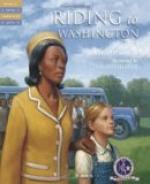In 1904, six years after Moorman’s appointment to the lectureship, the Yorkshire College was reconstituted as a separate and independent university, the University of Leeds; and in the rearrangement which followed, an older man was invited to come in as official chief of the department for which Moorman had hitherto been solely responsible. This invitation was not accepted until Moorman had generously made it clear that the proposed appointment would not be personally unwelcome to him. Nevertheless, it was clearly an invidious position for the new-comer: and a position which, but for the exceptional generosity and loyalty of the former chief of the department, would manifestly have been untenable. In fact, no proof of Moorman’s unselfishness could be more conclusive than that, for the nine years during which the two men worked together, the harmony between them remained unbroken, untroubled by even the most passing cloud. Near the close of this time, in recognition of his distinction as a scholar and of his great services to the University, a separate post, as Professor of the English Language, was created for him.
During the whole of his time at Leeds, his knowledge of his subject, both on its literary and linguistic side, was constantly deepening and his efficiency, as teacher of it, constantly increasing. With so keen a mind as his, this was only to be expected. It was equally natural that, as his knowledge expanded and his advice came to be more and more sought by those engaged in the study of such matters, he should make the results of his researches known to a wider public. After several smaller enterprises of this kind,(3) he broke entirely fresh ground with two books, which at once established his right to be heard in both the fields for which he was professionally responsible: Yorkshire Place Names, published for and by the Thoresby Society in 1911; and a study of the life and poetry of Robert Herrick, two years later. The former, if here and there perhaps not quite rigorous enough in the tests applied to the slippery evidence available, is in all essentials a most solid piece of work: based on a wide and sound knowledge of the linguistic principles which, though often grossly neglected, form the corner-stone, and something more, of all such inquiries; and lit up with a keen eye for the historical issues—issues reaching far back into national origins which, often in the most unexpected places, they may be made to open out. The latter, to which he turned with the more zest because it led him back to the familiar setting of his native county—to its moors and rills and flowers, and the fairy figures that haunted them—is a delightful study of one of the most unique of English poets(4); a study, however, which could only have been written by one who, among many other things, was a thorough-paced scholar. Many qualities—knowledge, scholarship, love of nature, a discerning eye for poetic beauty—go to the making of such a book. Their union in this Study serves to show that, great as was Moorman’s authority in the field of language, it was always to literature, above all to poetry, that his heart went naturally out. The closing years of his life were to set this beyond doubt.




